2023 Men's NCAA Tournament Bracket: Preseason Projection of the Field of 68
2023 Men's NCAA Tournament Bracket: Preseason Projection of the Field of 68
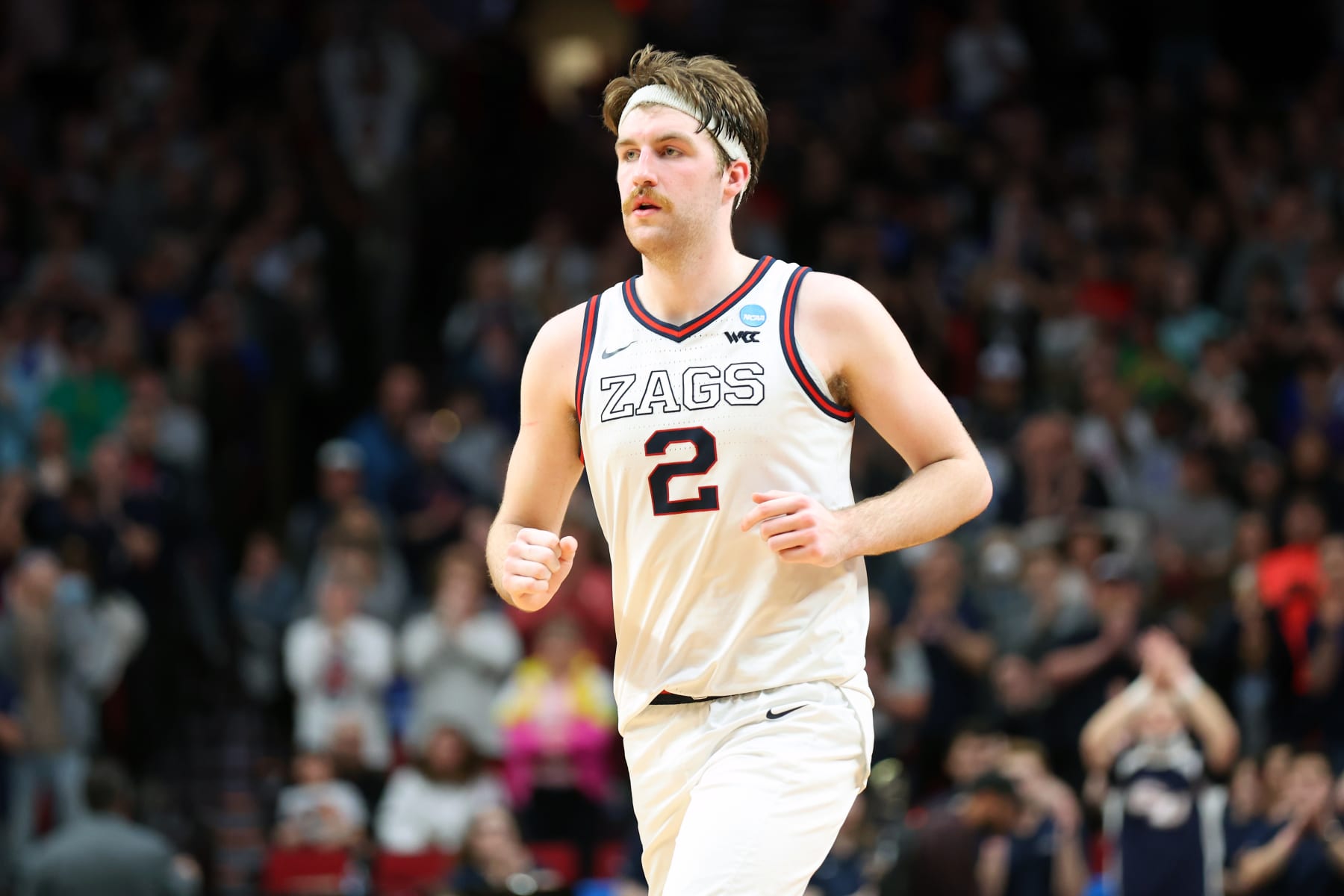
Goodbye, Halloween.
Hello, college basketball season.
Since the Kansas Jayhawks won that national championship in New Orleans all the way back in early April, we've missed you dearly.
The first game of the 2022-23 campaign is still a few days away, but now that we're finally into the proper month, it's time for a guaranteed-to-be-accurate*, way-too-early projection for this season's men's NCAA tournament.
*Not actually guaranteed, in case that's not abundantly clear.
Our in-season bracket projections will be slathered with dialogue about KenPom.com rankings, strength of schedule, the NCAA's Evaluation Tool (NET) rankings and various other advanced statistics. Huge wins and awful losses will spur the conversation about the biggest movers.
For preseason projections, though, it's all about research and gut feelings.
In each region, we'll discuss one team in the field that didn't go to the Big Dance last year, one team projected for a much better seed than last year and one team that—though still projected for a bid—isn't looking quite as strong as it did at the end of last season.
Before that, we'll start with the bubble, as we always do. And after the region-by-region breakdown is a ranking of the No. 1 seeds and a list of overall seeds by conference as a handy reference guide.
Last 5 In
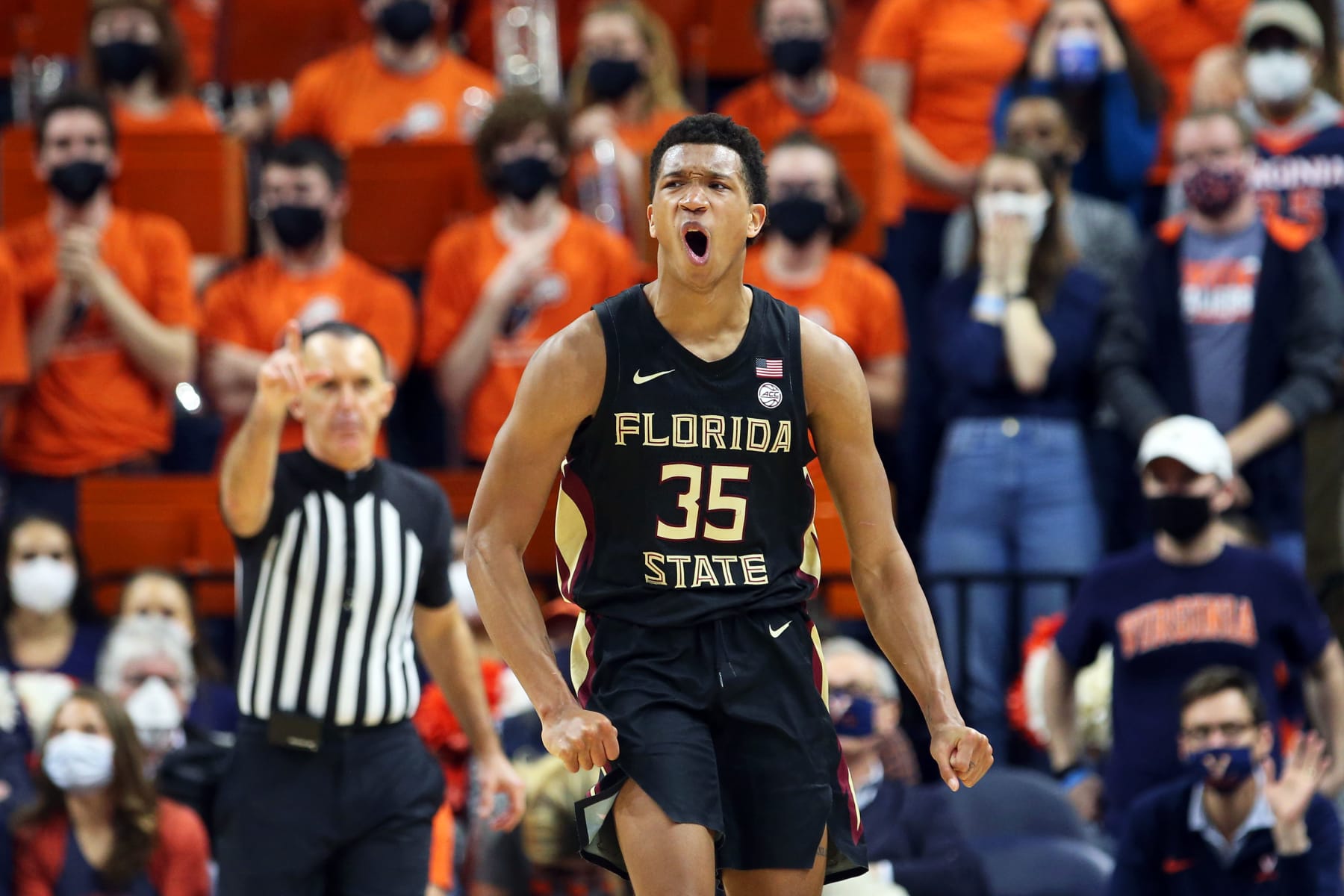
Last Team In: Florida State Seminoles
Florida State is typically a classic "whole is greater than the sum of its parts" team. Some years, it works great. Last year, not so much. But despite the departures of Malik Osborne, Anthony Polite and Rayquan Evans, there's more than enough talent—both returning and incoming—for this team to simply "out-athlete" its way to a 23-win season. If a star does emerge, watch out for Matthew Cleveland, who averaged 11.5 points per game as a true freshman last season.
Second-to-Last In: Wyoming Cowboys
Probably underselling Wyoming here, which was low-key one of the most entertaining teams to watch last season. The Cowboys still have double-double machine Graham Ike and nightly triple-double threat Hunter Maldonado. They also picked up a trio of Pac-12 transfers (Ethan Anderson, Max Agbonkpolo and Jake Kyman) who could make a considerable impact in the Mountain West. Nonconference games against Dayton and Saint Mary's in mid-December loom large.
Third-to-Last In: Wisconsin Badgers
No Johnny Davis...big problem? Wisconsin was the top No. 3 seed one year ago, but it lost both the No. 10 pick in the 2022 NBA draft and Brad Davison, who probably tried to draw a charge on his way out the door. What's left is a bunch of role players and up-transfers from Wofford and Green Bay, which is a substantial question mark. But Davis came out of nowhere last year, so maybe the Badgers have another star hidden up their sleeve.
Fourth-to-Last In: Saint Mary's Gaels
Is it really a preseason bracket projection if you don't have the Gaels on the bubble? They lost Tommy Kuhse and Matthias Tass, but they should still be the top challenger to Gonzaga in the WCC and figure to post a winning record for what would be the 20th consecutive season. Prior to the inevitable showdowns with the Zags, Saint Mary's has a pair of massive nonconference games against Houston and San Diego State to potentially prove it belongs in the Big Dance.
Fifth-to-Last In: St. John's Red Storm
The Red Storm went 17-15 last season and then lost their star player, Julian Champagnie.
So, why are they projected to dance?
Well, they were better than their record, and the addition of transfers Andre Curbelo (Illinois) and David Jones (DePaul) should be huge. The metrics never much cared for Curbelo while he was with the Illini, but pair him with Posh Alexander, and you've at least got a highly entertaining backcourt. If some three-point shooting emerges, this could be a team that reaches the NCAA tournament's Round of 32 for the first time since 2000.
Dropping Out of the Dance
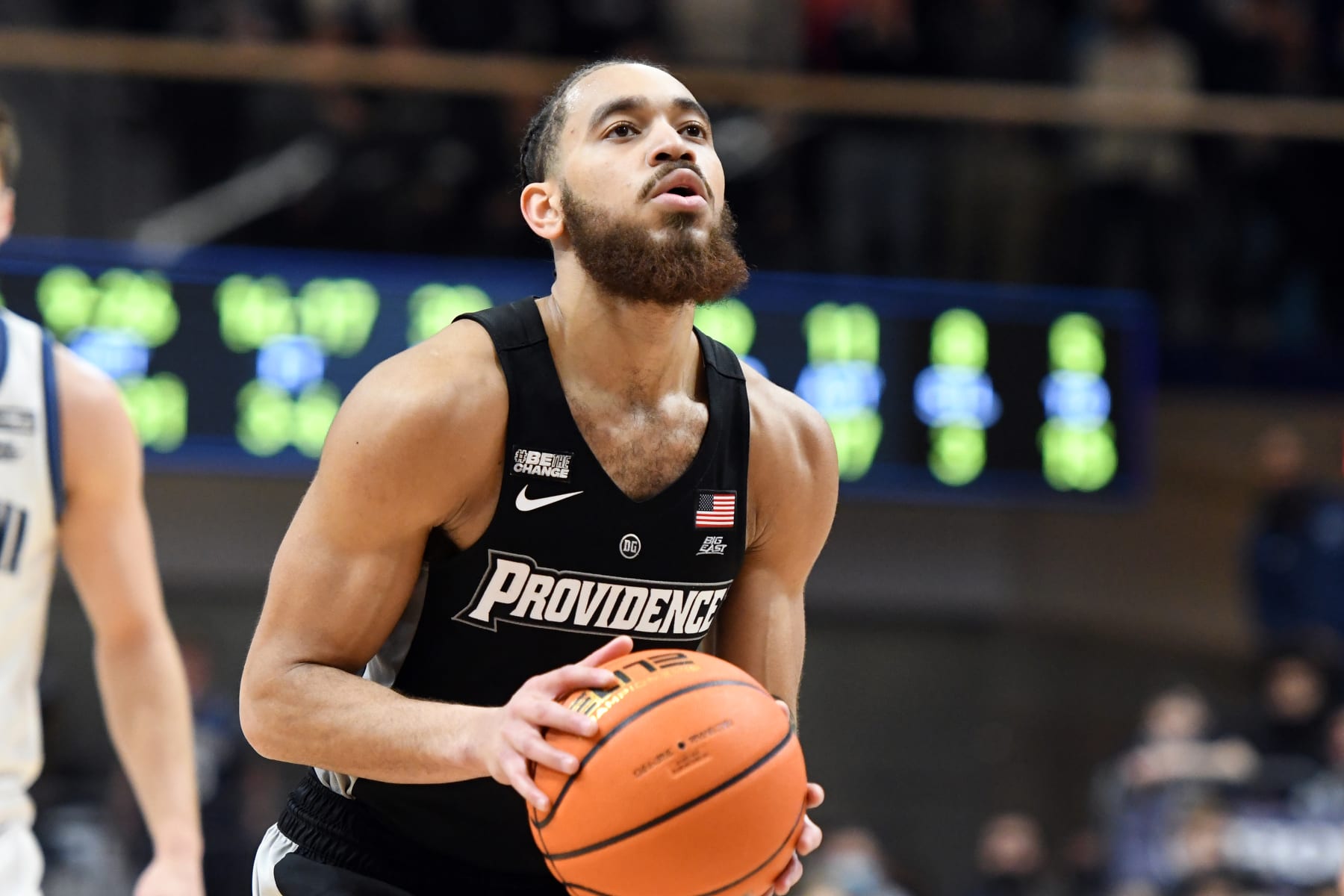
Within each region, we'll focus on one team that's projected to make the 2023 tournament after missing it in 2022. But for every action, there's an equal and opposite reaction. For those teams to move in, a bunch needed to move out. And these are the five highest-seeded teams from last year that aren't in our preseason field.
While these wouldn't necessarily be our First Five Out if we were seeding beyond the field for this preseason projection, they're all close enough for consideration.
Providence Friars (No. 4 seed in 2022)
I'll spare you the luck-based narrative that drove Providence faithful nuts last season and just point out the sheer volume of talent lost. The Friars need to replace five of their six leading scorers, leaving them with point guard Jared Bynum, backup center Ed Croswell and a bunch of fingers crossed on transfers who neither shot well nor had that much of an impact last season.
Love me some Ed Cooley, and I look forward to my heaping plate of crow if the coach leads Providence back to the promised land. I just don't see it this year.
LSU Tigers (No. 6 seed)
As far as we know, LSU is eligible for the 2023 NCAA tournament. The Tigers fired Will Wade just before the start of last year's dance and still have NCAA sanctions hanging over their head, but if they're good enough to qualify for it, they could be a part of March Madness.
But—with all due respect to Murray State—considering three of the six or seven most important players on this year's roster were in the OVC one year ago, we're not exactly all-in on this team thriving in the SEC.
LSU's nonconference schedule (aside from the Big 12/SEC Challenge game against Texas Tech in late January) is a joke. So it'll be a solid two months before we get a sense of whether this team could contend for a bid. It probably won't, though.
Colorado State Rams (No. 6 seed)
Even before news of Isaiah Stevens' foot injury, replacing four of the six leaders in minutes played—one of whom was MWC Player of the Year David Roddy—was going to be a lot to ask from a mid-major that just ended an eight-year NCAA tournament drought.
They'll be relying on a D-II transfer (Patrick Cartier) and a D-III transfer (Joe Palmer) to pick up at least some of the slack.
Murray State Racers (No. 7 seed)
Not only do the Racers have the unenviable task of replacing all four of last year's leading scorers, but they also have to make the leap from the Ohio Valley Conference to the much deeper Missouri Valley Conference.
I will admit, though, I thought Davidson had no hope of competing in its first year after realigning from the SoCon to the A-10 nearly a decade ago, but the Wildcats merely went out and won the league's regular-season title right away. And Racers head coach Steve Prohm did add quite the stockpile of high-scoring transfers. If it all comes together fluidly, maybe they will thrive in their new conference.
Seton Hall Pirates (No. 8 seed)
It would be a fascinating story if Shaheen Holloway—the architect of the Saint Peter's Cinderella run who returns to his alma mater to coach a much bigger program—immediately makes the tournament. And it sure would be something if the defensive star that he brought with him (KC Ndefo) plays a big role for the Pirates.
But replacing Jared Rhoden, Myles Cale and Ike Obiagu from a team that was nothing special on offense and only had a couple of remotely noteworthy wins figures to be a struggle.
East Region (New York City)
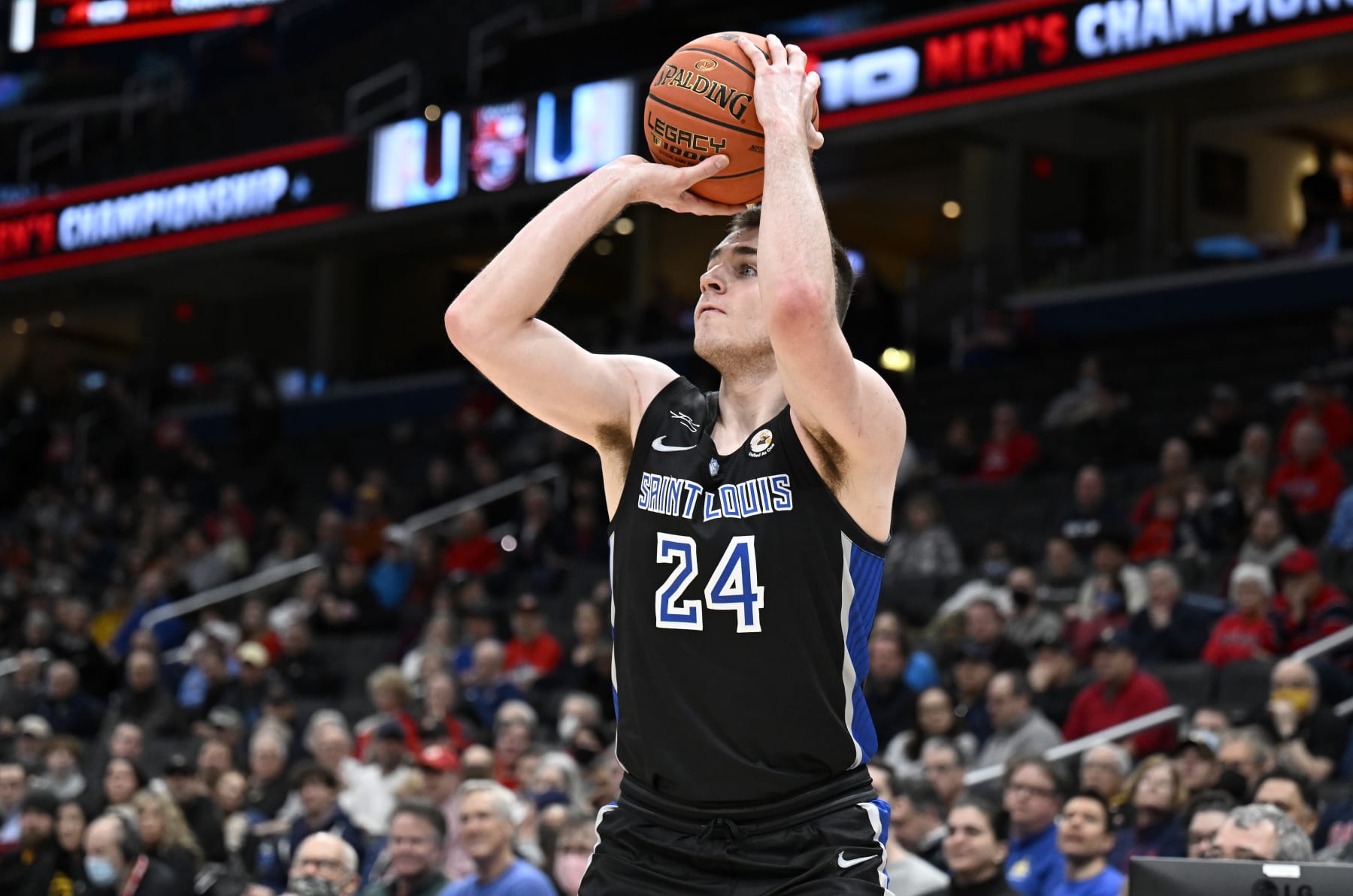
Greensboro, North Carolina
No. 1 North Carolina vs. No. 16 Norfolk State
No. 8 Saint Louis vs. No. 9 Texas A&M
Albany, New York
No. 4 Creighton vs. No. 13 Towson
No. 5 TCU vs. No. 12 Drake
Columbus, Ohio
No. 3 Indiana vs. No. 14 Colgate
No. 6 Texas Tech vs. No. 11 St. John's
Birmingham, Alabama
No. 2 Tennessee vs. No. 15 Marshall
No. 7 Michigan vs. No. 10 Memphis
New to the Field: Saint Louis Billikens
Saint Louis came close to an at-large bid last season, settling for a No. 3 seed in the NIT instead. It was their third 23-win season in the past four years, as Travis Ford has been on the verge of bringing this program back to its early-2010s levels of single-digit-seeded goodness.
The Billikens bring back all four of their leading scorers, picked up an impressive transfer in former Missouri Tiger Javon Pickett and, most important of all, they get back Javonte Perkins, who led the team in scoring in 2020-21 before he missed all of last season with a knee injury. If he's good to go without any sort of minutes restrictions or tentativeness, SLU and Dayton will have a fascinating battle for the A-10 crown.
Noteworthy Riser: Indiana Hoosiers
After a 16-5 start to last season, Indiana crashed and burned for a month and needed a strong showing in the Big Ten tournament just to sneak into the First Four.
But big things are expected from the Hoosiers with potential National Player of the Year Trayce Jackson-Davis (not to mention Race Thompson and Xavier Johnson) back for one more season. If 5-star freshman Jalen Hood-Schifino is as good as advertised in the backcourt, Indiana should win the Big Ten and might emerge as one of the top candidates to win the national championship.
Noteworthy Slider: Texas Tech Red Raiders
It's simply tradition to underrate the Red Raiders. In each of 2017-18, 2018-19 and 2021-22, they were unranked in the preseason AP Top 25, only to go on to earn a No. 3 seed in the dance and make it at least as deep as the Sweet 16.
And it's a tradition because they always seem to replace four or five of their top players with intriguing transfers, leaving everyone a little unsure of how things will turn out.
This year, the Red Raiders are replacing eight of the nine team leaders in minutes played, with Kevin Obanor as the sole returnee, but there's a high ceiling thanks to the additions of double-double machine Fardaws Aimaq* (Utah Valley), De'Vion Harmon (Oregon), Kerwin Walton (North Carolina) and Jaylon Tyson (Texas). And if Daniel Batcho has the breakout year he's capable of, yet another unranked-to-No. 3-seed type of season could be forthcoming.
*Aimaq is out with a foot injury, though the hope is he'll be back by the end of December.
Midwest Region (Kansas City, Missouri)
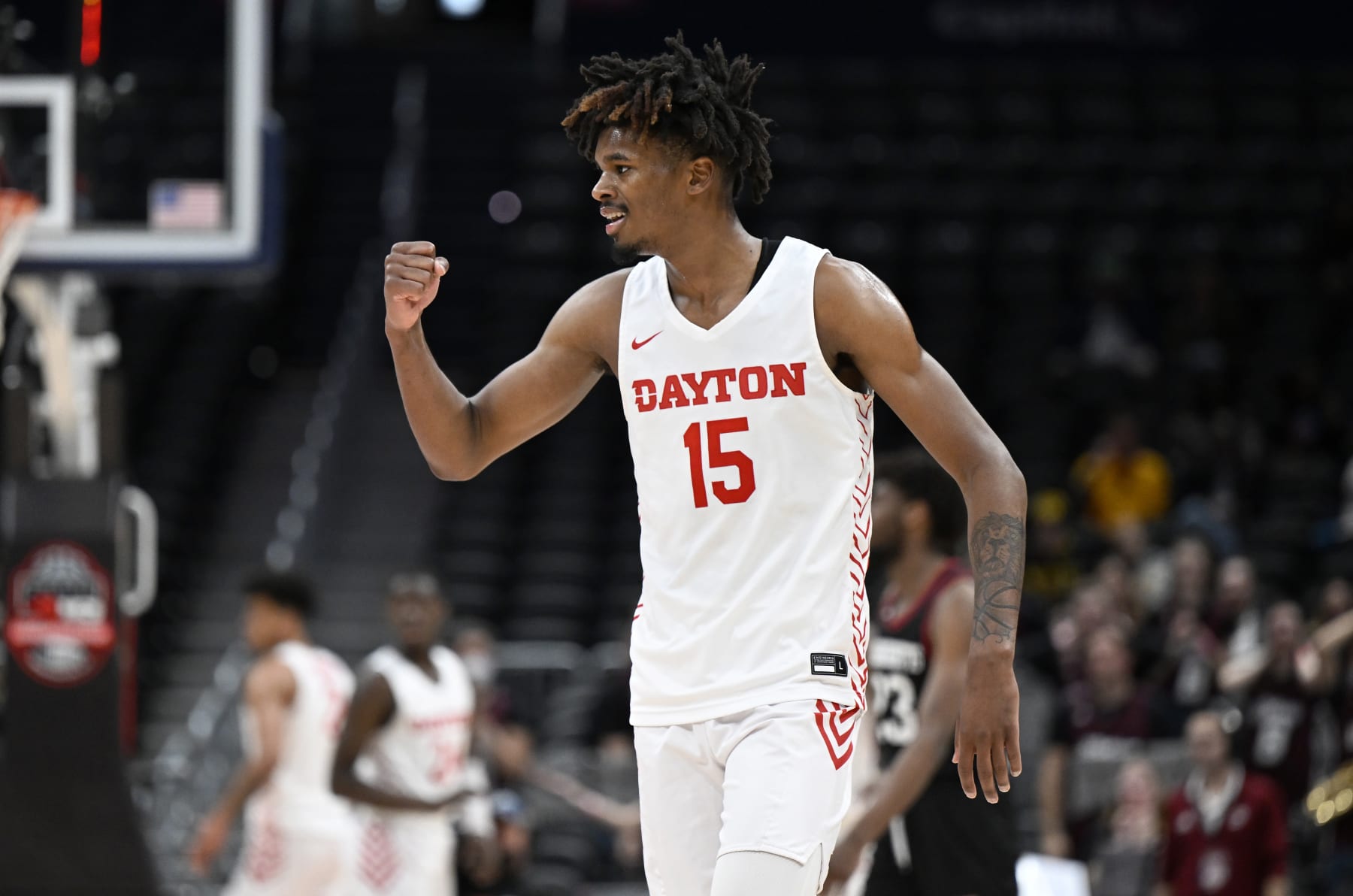
Birmingham, Alabama
No. 1 Houston vs. No. 16 Morehead State/Texas A&M-Corpus Christi
No. 8 Virginia Tech vs. No. 9 Iowa
Orlando, Florida
No. 4 Arizona vs. No. 13 Grand Canyon
No. 5 Alabama vs. No. 12 Wyoming/Florida State
Des Moines, Iowa
No. 3 Arkansas vs. No. 14 UC Santa Barbara
No. 6 Dayton vs. No. 11 Ohio State
Denver, Colorado
No. 2 Texas vs. No. 15 Princeton
No. 7 Xavier vs. No. 10 USC
New to the Field: Dayton Flyers
Yes, we're highlighting back-to-back A-10 teams as "new to the field," which should give you a sense of the league's potential depth.
In Dayton's case, the Flyers were tortuously close to sneaking in last year, named the first team out when the bracket was released, doomed in part by conference foe Richmond stealing a bid by winning the A-10 tournament on Selection Sunday. Dayton should be nowhere close to the bubble this year, though, with all seven of last year's leading scorers returning, including big man extraordinaire DaRon Holmes II.
Noteworthy Riser: Texas Longhorns
For the second consecutive year, expectations are sky-high for Chris Beard's Longhorns. They opened last season at No. 5 in the AP rankings but never quite tapped into that potential. They were pretty much unanimously the biggest winner of last year's transfer portal cycle, but getting all that imported talent to jell into a title contender eluded them.
This time, they have five veteran returnees (Marcus Carr, Timmy Allen, Christian Bishop, Dylan Disu and Brock Cunningham) and merely need to introduce two transfers (Iowa State's Tyrese Hunter and New Mexico State's Sir'Jabari Rice) and two highly-touted freshmen (Dillon Mitchell and Arterio Morris) to the equation. That's nothing compared to what Beard used to do on an annual basis at Texas Tech, and it could mesh into a Big 12 title.
Noteworthy Slider: Iowa Hawkeyes (and Ohio State Buckeyes and USC Trojans)
By total accident, all three of these teams are down exactly 13 spots from their 2022 overall seed and ended up in the same region.
I just wanted to point that out before zeroing in on Iowa as the most noteworthy slider, dipping from a No. 5 seed to a No. 9 seed, as the Hawkeyes need to figure out how to replace the NPOY candidate (Keegan Murray) who replaced their 2020-21 NPOY candidate (Luka Garza).
It's probably Kris Murray's time to shine, which he did on occasion last year. But we're tempering expectations a bit after their three consecutive seasons finishing in the AP Top 25.
South Region (Louisville, Kentucky)
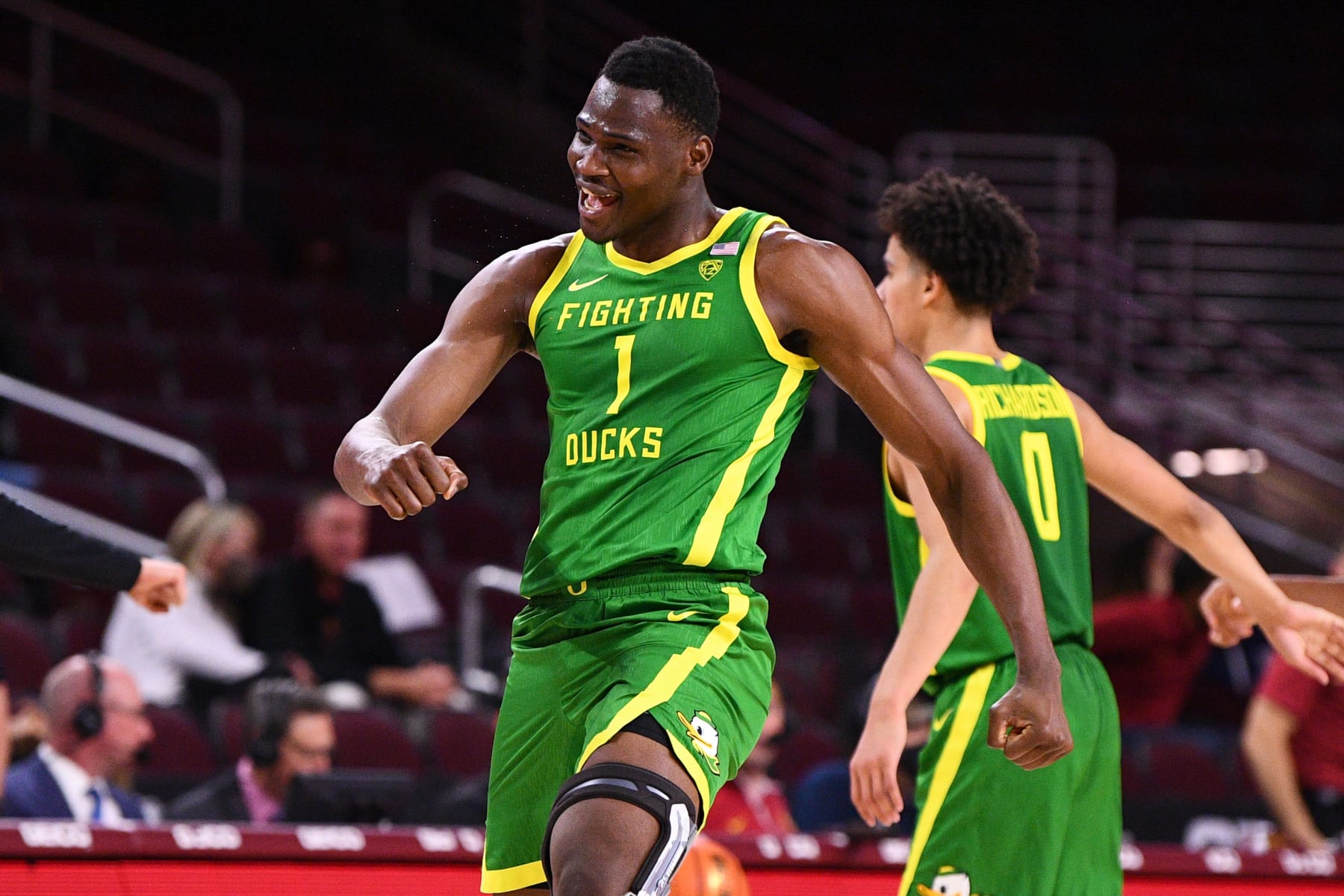
Columbus, Ohio
No. 1 Kentucky vs. No. 16 Wagner/Southern
No. 8 Michigan State vs. No. 9 Miami
Orlando, Florida
No. 4 San Diego State vs. No. 13 Vermont
No. 5 Villanova vs. No. 12 Furman
Greensboro, North Carolina
No. 3 Duke vs. No. 14 Iona
No. 6 Oregon vs. No. 11 Saint Mary's/Wisconsin
Des Moines, Iowa
No. 2 Kansas vs. No. 15 Northern Kentucky
No. 7 Purdue vs. No. 10 Florida
New to the Field: Oregon Ducks
In mid-February 2022, Oregon was in good shape for a spot in the field. But then the Ducks gave it away as emphatically as you'll ever see, losing by double digits not once, not twice but five times in the final month, all against opponents who missed the dance. I mean, they pooped in the refrigerator and ate a whole wheel of cheese.
Can they bounce back despite losing Jacob Young, De'Vion Harmon and Eric Williams?
Probably.
Especially if 5-star center Kel'el Ware immediately thrives and/or last year's 5-star center Nate Bittle has a breakout year after making basically no impact as a freshman. It will be interesting to see how head coach Dana Altman uses those two 7-footers in conjunction with 6'11" N'Faly Dante. What a nice dilemma to have, though.
Noteworthy Riser: San Diego State Aztecs
San Diego State hit a home run in last year's transfer portal cycle, bringing in Matt Bradley from California. And after being named to the Mountain West All-Conference first-team roster, he's back as a fifth-year senior to do a bunch more scoring.
Did Brian Dutcher and his staff hit a few more homers this offseason with Darrion Trammell (Seattle), Jaedon LeDee (TCU) and Micah Parrish (Oakland)?
Trammell is the big one. Figuratively speaking, anyway. He's actually a 5'10" point guard. But if he can bring his 2021-22 Seattle stat line (17.3 PPG, 5.0 APG, 2.5 SPG) to San Diego State, he and Bradley could be a ridiculously good backcourt duo.
Pair that with Nathan Mensah's shot-blocking and rebounding height in the post and you've got easily one of the best mid-major teams in the country—as is often the case with the Aztecs.
Noteworthy Slider: Purdue Boilermakers
They still have 7'4" Zach Edey, and head coach Matt Painter found another 7'2" freshman (Sweden's Will Berg), because of course he did. The Boilermakers always seem to have two dudes over seven feet tall.
But there's just no way Purdue can pick up where it left off last season after losing Jaden Ivey, Trevion Williams, Sasha Stefanovic and Eric Hunter Jr., right? Bringing in David Jenkins Jr. from Utah (and formerly from South Dakota State and UNLV) to hit a lot of threes will help, but the lack of an established point guard could be a major adventure in West Lafayette.
West Region (Las Vegas)
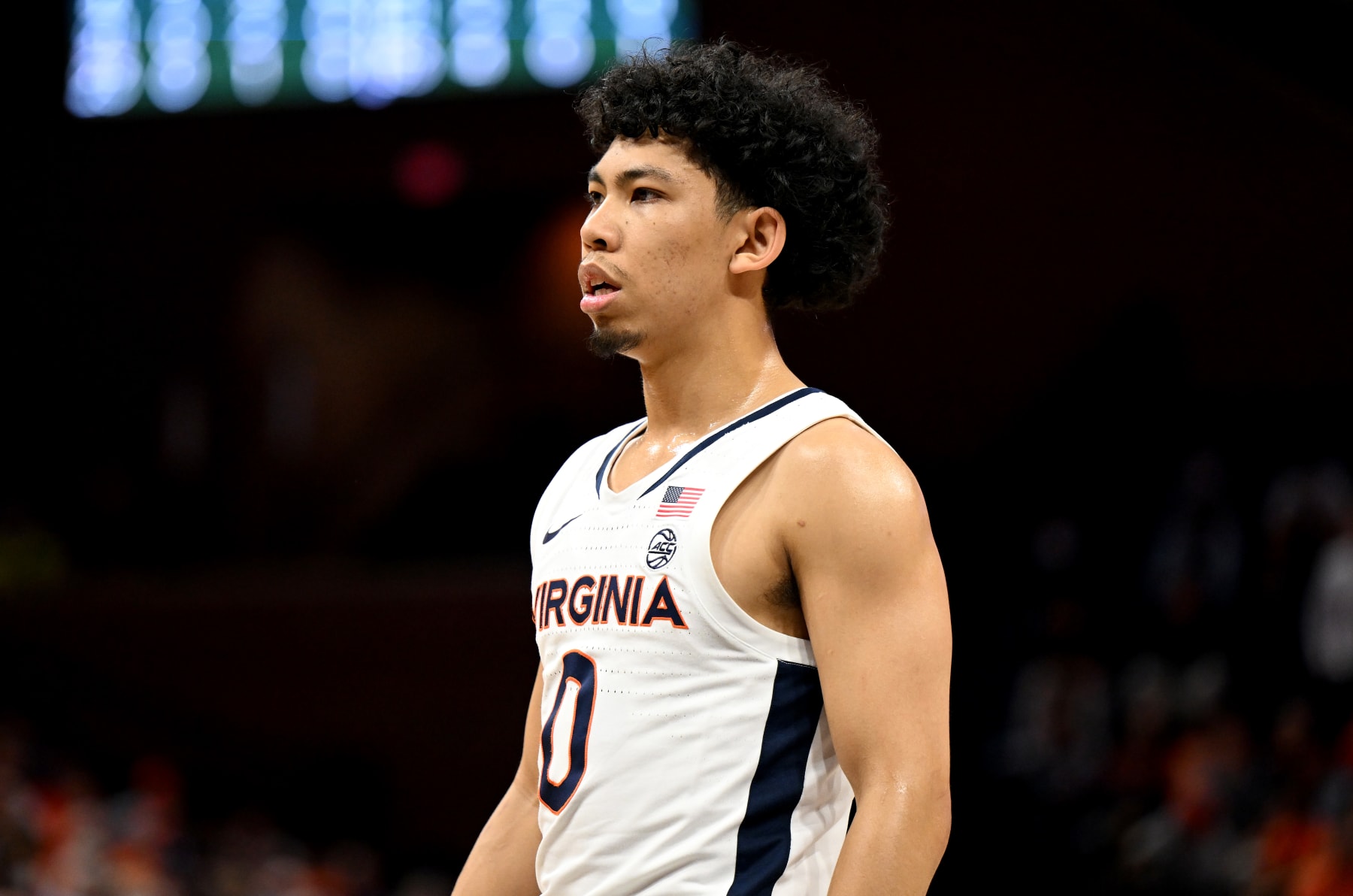
Sacramento, California
No. 1 Gonzaga vs. No. 16 Montana State
No. 8 Oklahoma State vs. No. 9 Notre Dame
Albany, New York
No. 4 Virginia vs. No. 13 Liberty
No. 5 Auburn vs. No. 12 Toledo
Sacramento, California
No. 3 UCLA vs. No. 14 Oral Roberts
No. 6 Illinois vs. No. 11 Oklahoma
Denver, Colorado
No. 2 Baylor vs. No. 15 Winthrop
No. 7 Connecticut vs. No. 10 UAB
New to the Field: Virginia Cavaliers
Virginia was uncharacteristically bad last season, particularly in the defensive rebounding department. That drastic uptick in opponents' second-chance opportunities put a lot of extra strain on what is usually one of the best defenses in the nation, and the Cavaliers never got into their usual, stingy groove.
For better or worse, last year's primary sextet returns intact. (Yes, even Kihei Clark, who has been around for longer than Perry Ellis ever was.) Coach Tony Bennett also picked up an impact transfer in Ohio's Ben Vander Plas (a 6'8" power forward who averaged 14.3 points, 6.8 rebounds and 1.8 steals last season) and put together a strong recruiting class consisting of four 4-star freshmen. On the "need to be better on the defensive glass" front, 6'10" Isaac Traudt might help solve those woes.
Noteworthy Riser: Notre Dame Fighting Irish
When in doubt, trust that the veteran team with the well-established head coach will figure things out. And to that end, Notre Dame is ancient in the form of six redshirt seniors—one of whom (Marcus Hammond) averaged 18.1 points per game last season with Niagara—while Mike Brey is the seventh-longest tenured coach in men's college basketball, about to begin his 23rd season with the Fighting Irish.
But Notre Dame's ceiling rests on the shoulders of freshman JJ Starling—the first 5-star recruit in program history, per 247 Sports. If he immediately thrives and the "old men" are content to let the young buck run the offense, the Irish could take a huge step forward.
Noteworthy Slider: Auburn Tigers
While we're not projecting a drastic fall from grace for Auburn, repeating as the top No. 2 seed after losing Jabari Smith and Walker Kessler—arguably two of the 10 best players in the country last season—probably isn't happening.
I mean, it could happen. Bruce Pearl landed a ridiculously good transfer in Morehead State's Johni Broome (16.8 PPG, 10.5 RPG, 3.9 BPG in his second season with the Eagles) and signed both a 5-star center in Yohan Traore and a high 4-star forward in Chance Westry. That's certainly one way to make up for losing both halves of an incredible frontcourt. But let's see if the new guys can deliver even half as much greatness as Smith and Kessler did.
Ranking the No. 1 Seeds
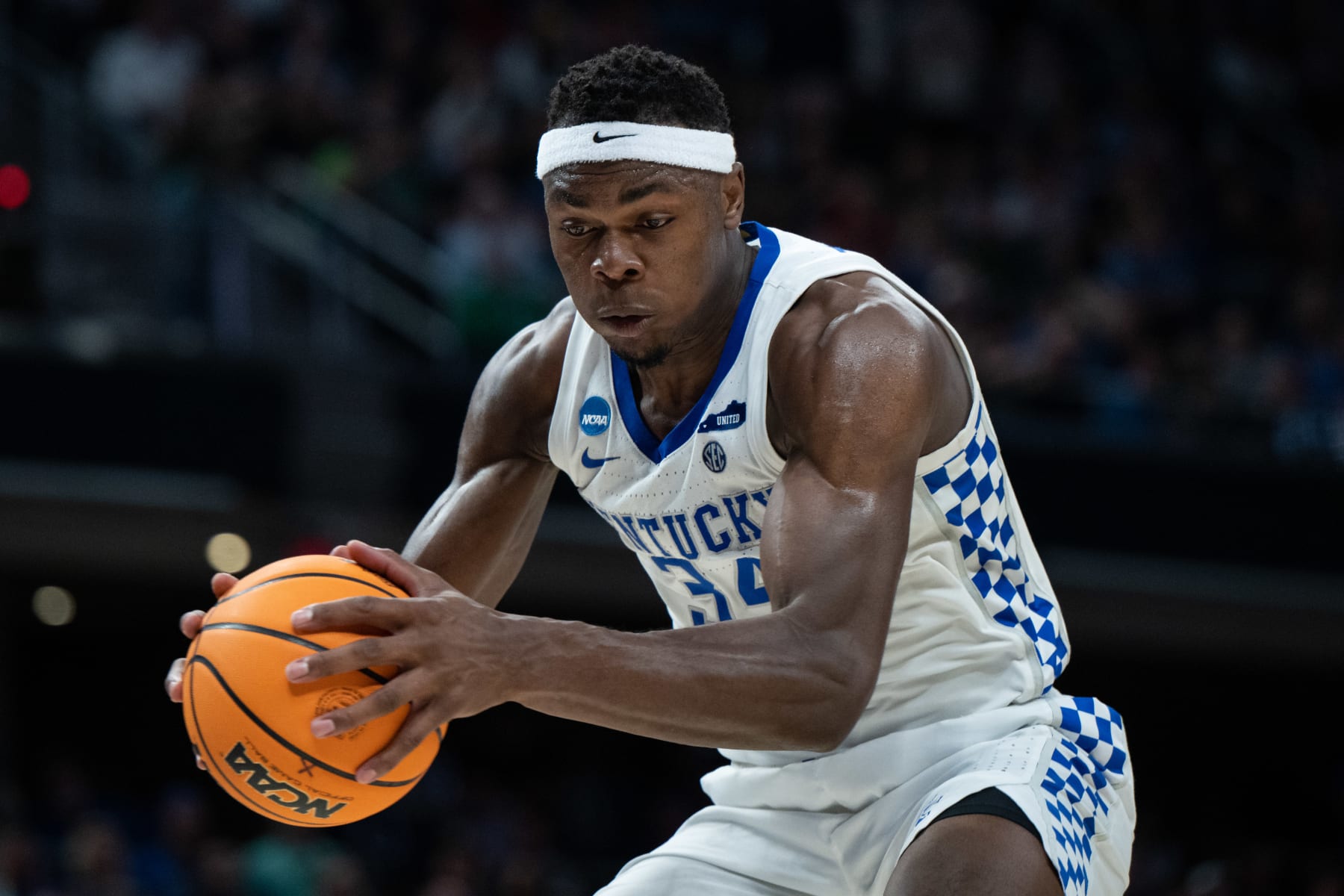
No. 4: Houston Cougars
By the time this year's tournament rolls around, it will have been four decades since the last time Houston was a No. 1 seed. But there's a lot of buzz about the Cougars, even though they lost four seniors who averaged at least 10 points per game.
Still, they have an uncommon amount of quality depth. Marcus Sasser and Tramon Mark both return after missing most of last season with injuries. Head coach Kelvin Sampson also signed a pair of top-40 freshmen (Jarace Walker and Terrance Arceneaux) and a transfer (Mylik Wilson) who will effortlessly fit into Houston's defense-first mindset.
The lack of an established shot-blocking presence feels like a major red flag in what should be a year in which the vast majority of top teams have a dominant post player, but Houston might force so many turnovers and fast-break opportunities that it won't matter.
No. 3: North Carolina Tar Heels
North Carolina gets the No. 3 overall in honor of the Big Three coming back for some unfinished business.
Armando Bacot, Caleb Love and RJ Davis all could have gone pro, but the only major void that last year's national runners-up need to worry about filling is the one left by Brady Manek. And in Northwestern transfer Pete Nance, that appears to have been well taken care of, as the 6'11" Nance is basically a two-inches-taller, less-mountain-man-looking version of Manek.
Let's not forget, though, that UNC entered last March very much on the NCAA tournament bubble. Got to wonder how we'd feel about this Tar Heels squad if it hadn't won that road game against Duke to secure a bid, or if it had lost the second-round game against Baylor in which the Heels blew a 25-point lead.
No. 2: Gonzaga Bulldogs
Who knows if the Zags will ever win an NCAA tournament, but projecting them for a No. 1 seed is just common sense. They were the No. 1 overall seed in each of the past two years, possibly would have been No. 1 overall in 2020 if there had been a dance and have earned a No. 1 seed in five of the past nine tournaments.
They lost Chet Holmgren and Andrew Nembhard, but coach Mark Few added two potentially major transfers in Malachi Smith (Chattanooga) and Efton Reid III (LSU). And with Drew Timme bringing that glorious fu manchu back to college basketball for yet another year, a title is within the Zags' grasp once again.
No. 1: Kentucky Wildcats
Let's see, Kentucky has the reigning National Player of the Year (Oscar Tshiebwe) who dominates the paint, a veteran point guard (Sahvir Wheeler) who doles out all sorts of assists, two of the best freshmen in this year's class (Cason Wallace and Chris Livingston) who should excel immediately, one of the more intriguing transfers of this year's portal cycle (Antonio Reeves from Illinois State) who can score in bunches and a pair of big-time, big-bodied breakout candidates (Jacob Toppin and Daimion Collins).
Yeah, that should work.
That first-round loss to Saint Peter's last March was one of the most stunning outcomes in NCAA tournament history. But after landing on the wrong side of the biggest upset of all-time, Virginia bounced back from its loss to UMBC to win it all the following year. And the Wildcats have more than enough talent to follow a similar script.
Seeding by Conference
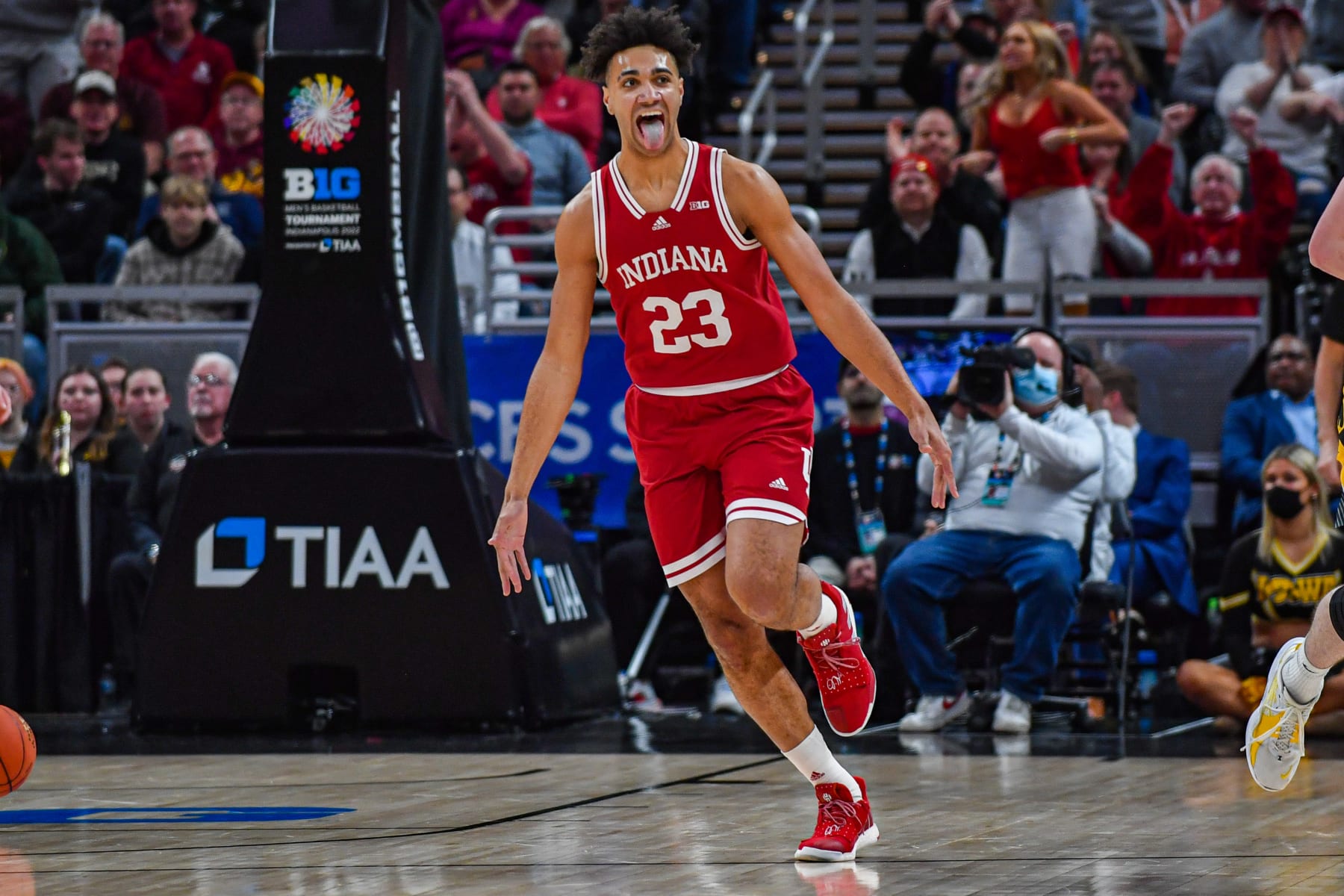
In case seeded regions aren't enough and you want to know where the "top" 68 teams stand in relation to one another, here is a list of each squad's overall seed, broken down by conference.
American (2): 4. Houston; 40. Memphis
Atlantic 10 (2): 21. Dayton; 31. Saint Louis
ACC (7): 3. North Carolina; 11. Duke; 14. Virginia; 30. Virginia Tech; 34. Notre Dame; 36. Miami; 47. Florida State
Big 12 (7): 5. Texas; 7. Baylor; 8. Kansas; 17. TCU; 23. Texas Tech; 32. Oklahoma State; 42. Oklahoma
Big East (5): 15. Creighton; 20. Villanova; 26. Xavier; 28. Connecticut; 43. St. John's
Big Ten (8): 12. Indiana; 22. Illinois; 25. Purdue; 27. Michigan; 29. Michigan State; 33. Iowa; 41. Ohio State; 45. Wisconsin
Mountain West (2): 16. San Diego State; 46. Wyoming
Pac-12 (4): 9. UCLA; 13. Arizona; 24. Oregon; 38. USC
SEC (7): 1. Kentucky; 6. Tennessee; 10. Arkansas; 18. Auburn; 19. Alabama; 35. Texas A&M; 37. Florida
West Coast (2): 2. Gonzaga; 44. Saint Mary's
Other (22): 39. UAB; 48. Drake; 49. Furman; 50. Toledo; 51. Towson; 52. Grand Canyon; 53. Liberty; 54. Vermont; 55. Iona; 56. Colgate; 57. Oral Roberts; 58. UC Santa Barbara; 59. Marshall; 60. Princeton; 61. Northern Kentucky; 62. Winthrop; 63. Norfolk State; 64. Montana State; 65. Texas A&M-Corpus Christi; 66. Morehead State; 67. Southern; 68. Wagner
Statistics courtesy of Sports Reference and KenPom, unless otherwise noted. Prospect ratings via 247Sports' composite list.
Kerry Miller covers men's college basketball and college football for Bleacher Report. You can follow him on Twitter: @kerrancejames.
